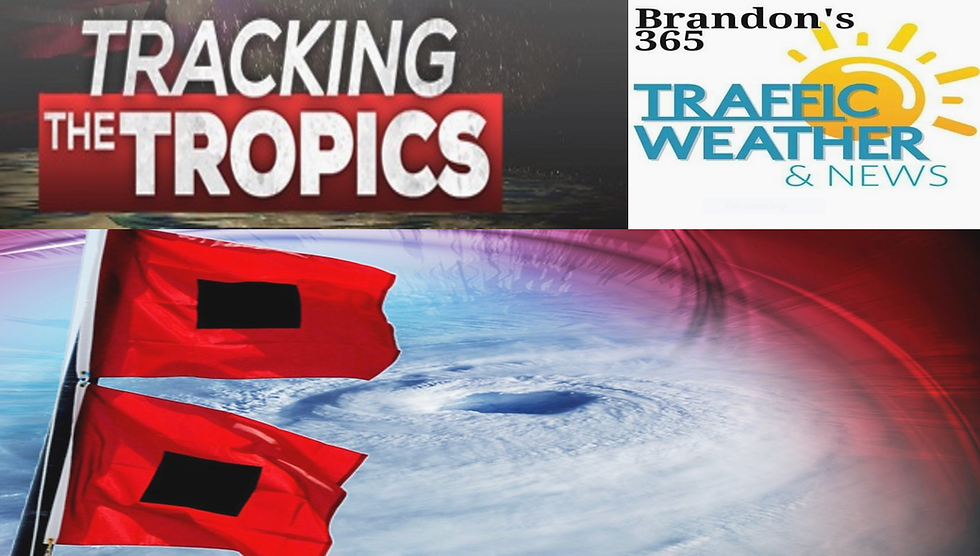TOP DANGEROUS TORNADO MYTHS
- Brandon Shipp

- Mar 5, 2020
- 3 min read
There are many tornado myths and myths about the weather that are very dangerous to believe.
1. TORNADOES do not happen in the mountains:
Tornadoes HAVE crossed high elevations in the Appalachians, Rockies and Sierra Nevada. An EF-2 tornado on Aug. 11, 1999, in the Salt Lake City area crossed a canyon -- descending one side and rising up the other about halfway along its path. An EF-4 tornado crossed the Continental Divide in Yellowstone National Park in 1987, according to the Storm Prediction Center.The highest elevation a tornado has ever occurred is unknown, but a July 7, 2004, storm was photographed by a hiker at 12,000 feet in Sequoia National Park in California. April 27th, 2011 a massive tornado hit The Great Smoky Mountains between Maryville and Gatlinburg. The tornado that hit the Smokies was ranked as an EF-4 with winds between 166 and 200 mph. Traveling northeast, the twister hugged the ground for 11.5 miles, clearing a quarter-mile to a mile-wide path through the forest that missed Cades Cove by only three miles. The tornado damaged approximately 4,500 acres in the Smokies. March 2nd, 2012 26 people lost their lives and more than 200 were injured in Kentucky. 18 tornadoes occurred statewide, and three of the biggest were in Eastern Kentucky in the mountains. The West Liberty Kentucky tornado was actually the longest tracked tornado in the country that year,
It traveled 86 miles at EF-3 intensity with winds around 140 mph. Mountains by no means are a safe haven from tornadoes. The numerous instances above might shock some people that think tornadoes only gravitate towards flat land and think that mountains are safe from tornadoes.
2. Overpasses are a safe place to seek shelter under:
The National Weather Service has been trying to break that myth for years. This myth really gained traction after a video from 1991 that showed a news crew and a family seeking refuge from an approaching tornado under a rural overpass.
According to the Storm Prediction Center, while the concrete and re-bar in the bridge may offer some protection against flying debris, the overpass also acts as a wind tunnel and may actually serve to collect debris. The winds in a tornado tend to be faster with height. By climbing up off the ground, you place yourself in even greater danger from the tornado and flying debris. When coupled with the accelerated winds due to the wind tunnel, these winds can easily exceed 300 mph.
3. Tornadoes don't cross rivers: Many tornadoes have crossed rivers and even gone on to cause widespread damage to riverside cities. A tornado in 1840 tracked directly down the Mississippi River, killing hundreds, mostly on the water near Natchez, Mississippi. Per the SPC: Others have crossed large rivers without losing speed (they momentarily became water spouts) and devastated cities that folklore had thought immune to tornadoes. An F-5 tornado in Waco, Texas, in 1953 crossed the Brazos River and killed hundreds of people. The Great St. Louis Cyclone of 1896 jumped the Mississippi River. Several tornadoes have crossed the river in Nahsville Tennessee.
4. Tornadoes don't hit big cities/downtowns: Some people who live in cities comfort themselves during thunderstorms by repeating the myth that tornadoes can't hit cities … except they can and do. Tall buildings don't stop a thunderstorm from spawning a tornado. A tornado hit downtown Atlanta in 2008, shattering windows at CNN's headquarters and damaging the roof of the Georgia Dome during a basketball game. Tornadoes have also hit New York City, Washington D.C., Dallas, Texas, Nashville Tennessee, Oklahoma City, Miami, Chicago Illinois, Jefferson City Missouri, Birmingham, Huntsville, Tuscaloosa, Jackson Mississippi, Tampa Florida, Seattle Washington and many other major metropolitan areas in the United States.
5. OUTDOOR warning sirens are a main way of being warned of a tornado while inside:
No one should ever rely soley on an outdoor warning siren to warn you inside. OUTDOOR warning sirens are meant for OUTDOOR use. Also not every city has tornado sirens and sometimes they malfunction.
6. A tornado will not strike the same spot once:
Very wrong a tornado has crossed the same spot many times in Nashville Tennessee and Oklahoma City.
7. Tornadoes only happen in the Spring and Summer:
Very wrong also tornadoes can occur anytime and anywhere when severe weather parameters are in place. They can occur in Winter and Fall as well.







Comments